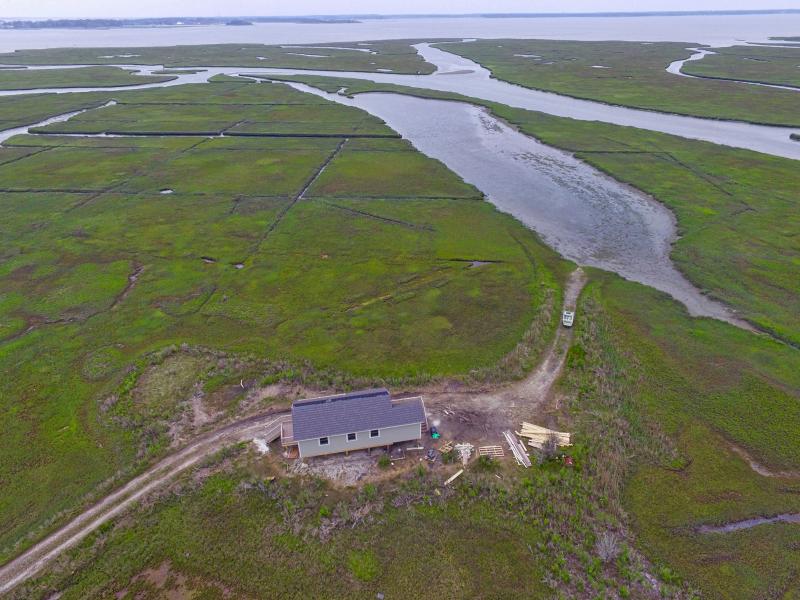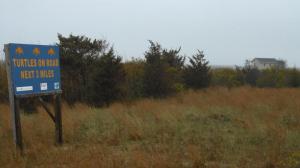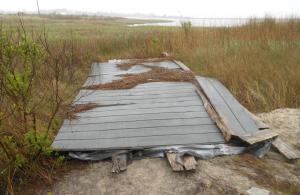Painted to match surrounding marsh grass and phragmites, a newly built hunting shanty in the marshes along Rehoboth Bay is designed to go unnoticed from above by waterfowl.
Driving southbound along Route 1, though, the building’s sturdy rectangular construction stands out above the windswept marsh.
Doug Long, Delaware Seashore State Park superintendent, said the structure, about two-thirds of the way to the Indian River Inlet Bridge from Dewey Beach, is called a mallard lodge. It sits on private land owned by Bethany’s Michael Wilgus.
Long said Wilgus and his family own one of a half-dozen, similarly sized tracts of marsh land near that stretch of the state park along Coastal Highway. The new hunting shanty is being built on the family’s land, Long said.
The cabin is replacing a decades-old cabin that stood farther out into the bay until it was destroyed during Hurricane Sandy in 2012. Cabins similar to the old cabin are still in existence today – there are two, one north and one south, near the Wilgus property.
Michael Globetti, Delaware Department of Natural Resources and Environmental Control spokesman, said the original cabin was built before Delaware wetlands regulations were established, and it was grandfathered under the regulations. However, said Globetti, when the Wilguses came to DNREC’s Wetlands & Subaqueous Lands Section for permission to repair or replace it, DNREC’s response was that the structure should not be rebuilt in the wetlands.
Having been grandfathered, said Globetti, the Wilguses were entitled to rebuild in the original location, provided the new structure maintained the same size and shape. DNREC didn’t have the authority to deny the application, but the agency also didn’t want the new structure to be rebuilt in the wetlands, he said.
In the course of discussions, DNREC and the Wilguses found a portion of the property 2 feet above local mean high water, which means it was not in wetlands as defined by state code, Globetti said. The property owner submitted a formal map change request for that identified area in September 2013, which was ultimately authorized in May 2014, he said.
“The owner could have rebuilt what they lost from Sandy but found a different location on the property at a slightly higher location which, while surrounded by wetlands, is outside of DNREC’s jurisdiction as defined by Delaware law,” wrote Globetti in an email.
Long said the Wilgus family lands are what is known as Big Bacon Island and Big Bacon Creek within the marsh of Rehoboth Bay. A legal settlement in the 1970s established a 30-foot-wide easement through state lands to the Wilgus property, Long said.
The property has no water, electric or sewer service, Long said.
“I tell folks, think of those deluxe ice-fishing cabins on the Great Lakes but for duck hunting,” said Long in an email.
The state parks department does not enforce building permits on private lands, said Long, but calls to the county and park office revealed the Wilguses have all the required building permits.
Wilgus declined to comment for this story.
Chris Flood has been working for the Cape Gazette since early 2014. He currently covers Rehoboth Beach and Henlopen Acres, but has also covered Dewey Beach and the state government. He covers environmental stories, business stories and random stories on subjects he finds interesting, and he also writes a column called Choppin’ Wood that runs every other week. He’s a graduate of the University of Maine and the Landing School of Boat Building & Design.
























































